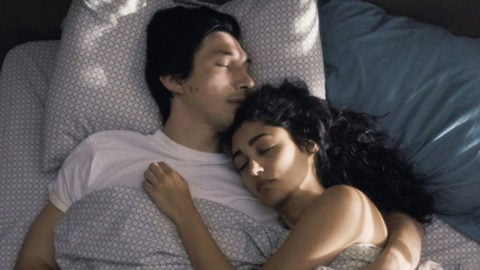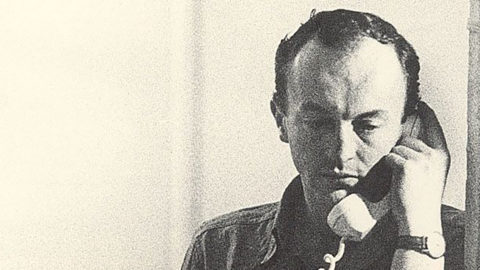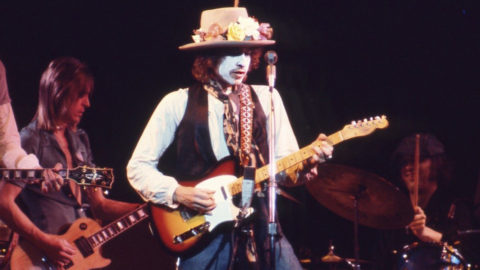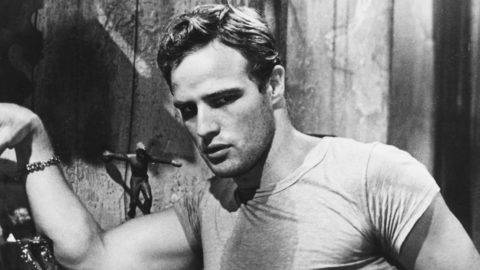Present Tense: Sylvia Plath Goes to the Movies
Present Tense is a column by Sheila O’Malley that reflects on the intersections of film, literature, art, and culture.
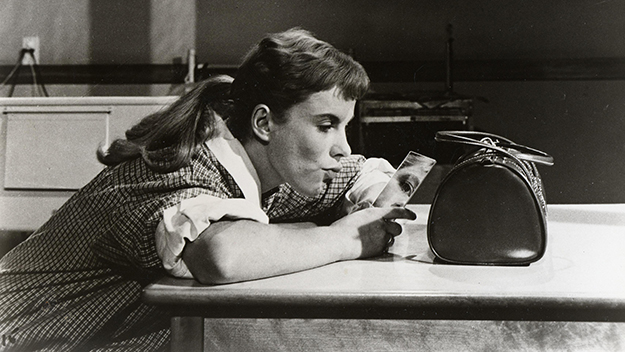
Brink of Life (Ingmar Bergman, 1957)
“[The Cabinet of Dr. Caligari] is the sort of movie I enjoy most: it shocks one into new awareness of the world by breaking up the conventional patterns and re-molding them into something fresh and strange.”
—Sylvia Plath, letter to her mother, November 7, 1955
This is just one of the many references to Plath’s moviegoing in the recently published two-volume Letters of Sylvia Plath, edited by Peter K. Steinberg and Karen V. Kukil. As hard as it is to fathom, the only correspondence published until now was Letters Home, brought out in 1975 by Aurelia Schober Plath, Plath’s mother. Letters Home was made up entirely of Plath’s letters to her mother, who had wielded an extremely heavy editing hand, the text peppered with suspicious-looking ellipses. The volume had a defensive purpose: show the world the close mother-daughter relationship in order to combat all the posthumous revelations (in Plath’s poems, journals, and novel) of her sense of suffocation in the relationship, immortalized in the vicious poem “Medusa” which ends:
Off, off, eely tentacle!
There is nothing between us.
In the new edition, the letters to her mother are now printed in full, and the volume also includes, for the first time, letters she wrote to boyfriends, girlfriends, pen pals, editors, in-laws, giving a much fuller picture. Plath censored herself when writing to her mother, accentuating the positive. This is normal. But having only those letters available for decades has created a skewed version of Plath as a manically bright neurotic people-pleaser. Finally, with this new edition, Sylvia Plath has been allowed to speak for herself, in all her different voices.
One of the truly weird quirks of Schober Plath’s ham-fisted editing of Letters Home, apparent now in the unedited letters, was to remove every reference Plath made to the movies she saw. The reasons for this can be guessed at, but along with all the other fresh information in the new edition, this Plath fan is thrilled to read Plath’s copious thoughts on the movies, as well as the “mystic incense”—as she wrote in a journal entry—of the entire moviegoing experience.
Plath’s work, at least what has been available to us until now, is notable in how much she seemingly ignored pop culture. Rock ’n’ roll exploded during her teenage years and warrants barely a mention. Movies seemed to barely exist for her, although there are a few exceptions. In a famous sequence in The Bell Jar, published posthumously under a pseudonym, the narrator, Esther Greenwood, attends a movie premiere in New York City. The movie is “a football romance” in Technicolor (“I hate Technicolor,” she declares). Plath then describes the movie in pitiless detail, decimating Hollywood cookie-cutter plots. Esther has a moment of dissociation looking “round me at all the rows of rapt little heads with the same silver glow on them at the front and the same black shadow on them at the back, and they looked like nothing more or less than a lot of stupid moonbrains.” As Janet Malcolm noted in The Silent Woman, “[The Bell Jar is] an indictment of the fifties in America.”
Schober Plath saw fit to include one reference to the movies in Letters Home (probably because it connected to Plath’s poetry). Plath tells her mother she’s written “a long poem” about “three women in a maternity ward, inspired by a Bergman film.” Plath had seen Bergman’s Brink of Life in 1961 at a retrospective in Hampstead and “Three Women: A Poem for Three Voices” was the result. Because this has been one of the few references to movies in Plath’s work, it has received a lot of attention. (Kogonada, the video-essayist who went on to direct Columbus, created a video-essay about mirrors in Bergman’s films, set to a reading of Sylvia Plath’s poem “Mirror”, connecting Bergman and Plath visually and thematically. Now that we know more about Plath’s love of Bergman—she saw as much of his work as she could—deeper exploration should be done in this area.)
Plath’s unedited correspondence is filled with references to film. She saw The Tales of Hoffmann, Summertime (her comments counteract The Bell Jar’s “I hate Technicolor” with “a Technicolor Venice made me want to leave right away for Italy”); she saw Rashomon, she discovers Charlie Chaplin; she loves Jean Cocteau, particularly Orphée, and falls in love with Jean Marais after seeing La Belle et la Bête; she sees Citizen Kane for the first time in 1956 (“excellent photography”), she loves Hitchcock (“[The Lady Vanishes] had me jumping at shadows behind doors for a few days”); she hires a babysitter so she can see Bergman’s Through a Glass Darkly.
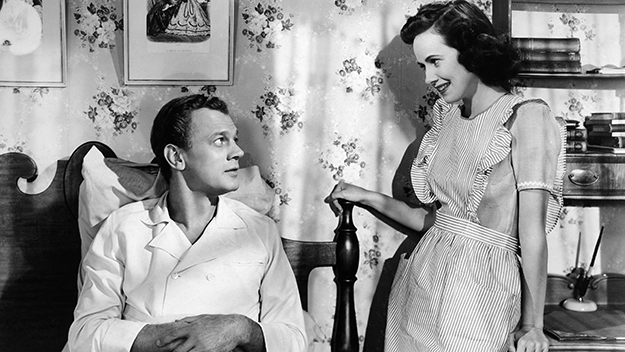
Shadow of a Doubt (Alfred Hitchcock, 1943)
For the first time, Plath is revealed as an adventurous and voracious moviegoer. She lived in a very exciting era for film, coming of age in the 1950s. While the “football romances” were, indeed, depressing, the 1950s also saw the influx of foreign films onto American soil, Japanese, French, Swedish, Russian, with art houses proliferating, these movies providing glimpses into other cultures and new ways of seeing. Plath was an active participant in all of it, joining the Film Society while studying at Cambridge on a Fulbright scholarship, sometimes seeing as many as three movies a day. Here is just a brief smattering of Plath’s copious commentary on movies in the unedited correspondence. This is all never-before-seen material.
“Jan and I headed for the Greenwich theater for two superlative Hitchcock thrillers: Maltese Falcon . . . and Shadow of a Doubt with Joseph Cotten as the handsome strangling uncle . . . Jan and I were both so tense afterwards that we looked for evil leering little men in every shadowed alley.”
—to friend Gordon Lameyer, June 11, 1954
“Saturday afternoon, I saw Gate of Hell, that beautiful Japanese movie that the critics are all raving about it . . . Strange, but the foreign languages bothers one not a bit, which is a tribute to the universality of the performance and the excellence of the acting . . . one color poem after another…”
—to Lameyer, January 26, 1955
“Saw Wuthering Heights last night (Laurence Olivier as Heathcliff, Merle Oberon as Kathy—remember?) and wept buckets & couldn’t stop. Also saw Desperate Hours—a magnificent melodrama—and the movie La Ronde.”
—to her mother, May 30, 1955
“[Saw] one superlative French movie, Rififi, which makes Alfred Hitchcock seem an infant.”
—to her mother, September 25, 1955
“[We saw] an hysterical old Harold Lloyd film and Eisenstein’s magnificent 1925 version in Russian of the Battleship Potemkin, which struck us all with tremendous power; took a brief walk in the rain and talked about it.”
—to her mother, August 20, 1956
“Ted took me to a good French movie Les Enfants du Paradis last night—a period piece about the theater in 1840 France. I think we’ll go to a movie a night now, there are such fine ones here—always 4 or 5 to choose from.”
—to her mother, March 26, 1960
When Plath’s “unabridged” journals were released in 2000, it was a major event for Plath scholars and fans. Her heavily edited journals had been “out there” for years, but since they were edited by her husband Ted Hughes, who was also executor of her estate, it was a situation fraught with mistrust. How self-serving had he been in his editing? Should he be in charge of any of it? (Janet Malcolm’s book is about the problems writers have had in dealing with the Plath estate.) For anyone who had devoured “abridged” journals there was much to discover in the unabridged. While attending Smith, Plath saw Luis Buñuel’s Un Chien Andalou, and wrote a shot-by-shot description in her journal: “man idly whittles fingernail with razor . . . goes on porch outside . . . looks at sky . . . (switch to sky) . . . three thin clouds slice horizontally over a full moon . . . (girl’s face on screen) . . . moon again . . . (girl’s face again) . . . hand of man lifts eye and slits it neatly with razor . . . closeup of gore…” Nineteen-year-old Plath was obsessed with how images were put together, how montage worked. (She mentions having seen the film in a letter to her mother, and Aurelia bafflingly edited out the passage.)
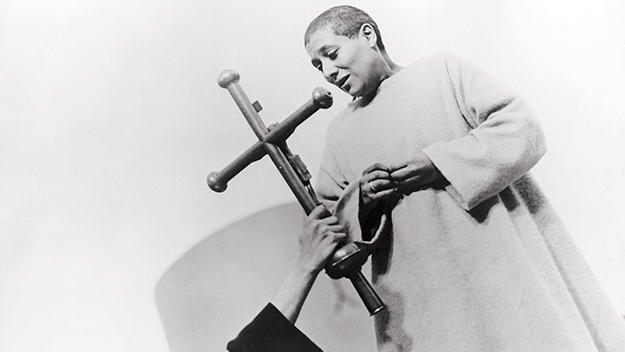
The Passion of Joan of Arc (Carl Dreyer, 1928)
Perhaps the most vivid example of Plath’s love of movies is her anguished response to Carl Dreyer’s The Passion of Joan of Arc, which she saw at MoMA in 1955. She returned to her hotel and wrote four letters to different people, including her mother, describing in detail her shattered response. To friend Gordon Lamayer she wrote:
I could hardly sit through it, it shocked and sickened me so, shuddered at the base of the soul . . . [A]t first I wondered why the piano music was not at all dramatic, but very casual and unrelated to the emotions of the movie, but soon I understood that it absorbed some of the tremendous tensions aroused, and made the emotion more supportable. The sense of martyrdom grew agonizingly, until the least twitch of a monk’s eyelid conveyed the impact of a whole century of cruel blindness. The final scene at the pyre was perfect and terrible. I’ll never forget a close-up shot of a baby sucking its mother’s nipple, turning casually to the final agony of the saint, and then calmly resuming sucking. I was so purged and cleansed by this catharsis, psychic and spiritual, that I had to walk around Central Park in the dark for an hour.
What thrilling new information about this picked-apart poet, about whom the “gaps” and ellipses have led to so much speculation and rumor. This woman loved movies. She ate them up. She pondered them, obsessed on them, they inspired her own work. Besides the “canon” example of “Three Women,” I think of her famous “bee sequence,” five poems about bees written in the terrible fall of 1962, when her marriage to Hughes had fallen apart. These terrifying poems unfold with a cinematic propulsion, similar to her breakdown of Un Chien Andalou, where gaps in the action create an imaginative space far more terrible than what’s onscreen. Plath’s poems are also extremely visual, with mannequins and trees and moons proliferating in a confusing riot. The incongruity of her juxtaposed images (“A cake of soap / a wedding ring / a gold filling”) mirror film montage, creating similar visceral effects. She recognized how devastating it was to juxtapose the burning pyre of Joan of Arc with the breastfeeding infant. This is what Plath does again and again in her poems. In “The Couriers,” from November 1962, she “leaps”—dizzyingly—from a snail on a leaf to “a sealed tin” to a gold ring to a crackling cauldron in the mountains. It sounds like a Terrence Malick montage. Reading her poetry with this new information about her love of films opens up exciting avenues of possibility.
In a journal entry from 1952, 20-year-old Plath describes, in detail and in the third person, going to the movies on a date. The entry is all about sex, and how a nice girl in 1952 America had to “discipline her tender and desiring libido,” yes—but movies allowed erotic fantasy free rein. In stark contrast to the “moonbrains’ image in The Bell Jar (in fact, this passage could be seen as its mirror opposite), Plath wrote rapturously:
In the darkness you find two seats… and go lifting, speeding into the great moving magic of the silver screen which pulls all into itself, lulling with the magnetic other-worldliness all who sit in adoration before it . . . Here the mystic incense of the traditional popcorn, chewing gum and chocolate, of mixed perfume and whiskey smells is neutralized and cooled by the patented air-conditioning system. And here people can lose their identity in a splurge of altruism before the twentieth century god. His messengers, his missionaries are everywhere.
We know a lot about Plath’s literary influences, the writers she loved and imitated. She wrote about them often. But it looks like now we need to add a few names to that list—names like Kurosawa, Bergman, Eisenstein, Hitchcock, Buñuel…
Sheila O’Malley is a regular film critic for Rogerebert.com and other outlets including The Criterion Collection. Her blog is The Sheila Variations.



